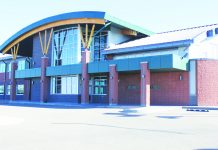SANDRA M STANWAY
Brooks Bulletin
To help farmers and ranchers get the maximum benefit on land improvement, a representative of ALUS (Alternative Land Use Services) presented the program to county council last week.
Christine Campbell, senior western hub manager for ALUS Canada explained that the project is run as a 50-50 partnership.
She said establishment of projects is cost sharing with the producer but the individual communities set the rate such as a 50-50 cost share.
“The reason we cost share for establishment and not just pay to have a project established is that way you are getting projects that are maintained in the long term because they make sense on the farm. They’re things that producers want to do anyway and that producer has some skin in the game.”
While ALUS pays half, the other half is paid for by the landowner with prices set by a community organization.
Across Canada the organization is currently helping farmers and ranchers on more than 52,600 acres to restore wetlands, install riparian buffers, plant windbreaks and ecobuffers, manage sustainable drainage systems, create pollinator habitat and establish other ecologically beneficial projects.
“It’s about using the land as efficiently and effectively as possible,” she said.
One example is a parternship with Ducks Unlimited (DU) where a wetland has been restored.
She said some communities partner with DU and ALUS to do riparian restoration.
“Ducks pays for the water part, ALUS pays for the riparian part around it and the farmer gets the maximum benefit,” she said.
She said the organization has been mislabelled as a conservation program but they’re really about production.
“What we ask producers to do is to produce more of these good things so, whether that’s water quality, biodiversity, carbon sequestration, nutrient cycling and soil health, wild life habitat or pollinator habitat or whatever it is that they’re able to produce we want more of that,” she said.
“ALUS takes a real whole ecosystem approach.”












